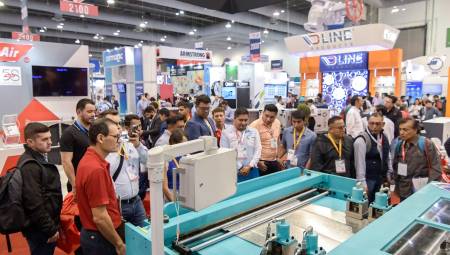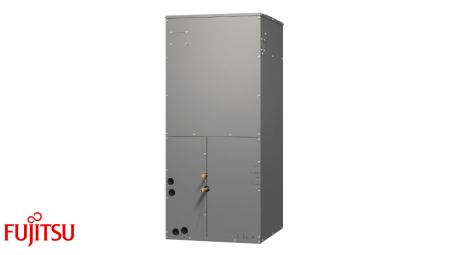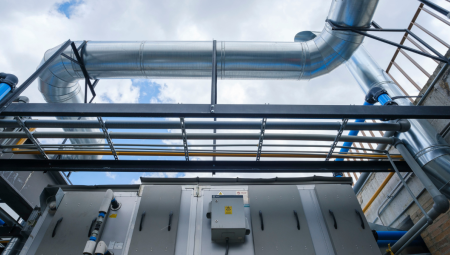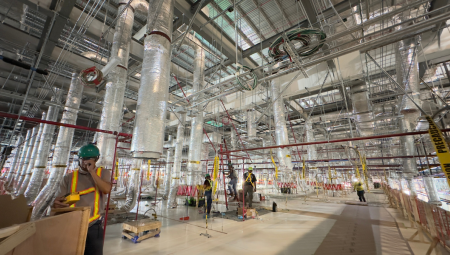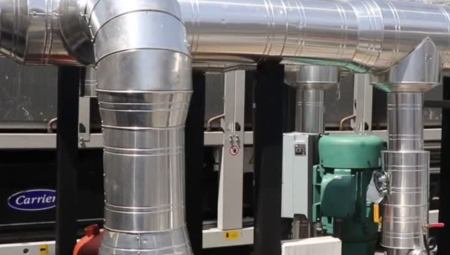Through this article it is revealed how the ventilation sector is participating to find a way to make the energy used by fans more efficient.
More than 50 years ago the ventilation industry instituted the Air Movement and Control Association (AMCA). Since its inception AMCA implemented the fan performance certification program. This certification program was instantly accepted by the HVAC industry in the United States and Canada.
AMCA expanded beyond North America, and became AMCA International, and with it the certification program was accepted in other regions of the world including Europe, Asia and India.
To complement the needs of the certification program, AMCA first pushed standards to determine fan performance expressed in terms of flow, static pressure, sound, roll quality, and vibration, in conjunction with the American Society of Heating Refrigeration and Air Conditioning Engineers (ASHRAE).
The next step, achieved in the last two decades, was to develop American National Standards in this field. Through this process almost all AMCA Standards for fans have been converted to American standards.
The ventilation industry is also actively involved in ASHRAE technical committees and specifically with ASHRAE TC 5.1 Fans. In addition, AMCA International is active in advancing international standards for ventilators at the International Organization for Standardization (ISO), through the American National Standard Institute (ANSI), whose committee perfected a number of ISO Standards for Ventilators.
ASHRAE and ISO are presenting work on standards, aimed at reducing energy use in fans. On the one hand, ASHRAE is directing its needs for the non-residential HVAC industry in the United States, and on the other hand, ISO's work is oriented to the use of fans with specific considerations according to the European Union and the United States.
In the fall of 2007, ASHRAE SSPC (Standing Standard Project Committee) 90.1 Mechanical subcommittee, invited the ASHRAE TC 5.1 fan committee to participate in the development of requirements for fan efficiency, where the first group developed a system for the classification of energy efficiency in the use of fans.
AMCA International recognized the importance of this group's efforts and how the committee is participating in the process of these requirements, through active partners organized into working groups at ASHRAE and ISO.
Both the designer and the manufacturer are responsible for the energy efficiency of the fan, as both are responsible for the use of energy.
It can be safely said that in the last five decades it has been common practice to select fans for different applications, to use the preferred static pressure over the total pressure, leaving aside the fact that the pressure required by the system must be satisfied by the total pressure and not by the static pressure.
As a result, static efficacy is used as a measure of efficiency, because it is linked to fan power, commonly employed in fan pressure. It is not intended to say that the total fan pressure should not be used at all, but the use is mainly limited to the selection of axial flow fans.
For HVAC systems, we define the fan as an air movement machine with drive transmission. The input energy of the fan comes from the motor shaft.
The fan input and output are used as control areas to determine the energy transferred to the air by the fan. Therefore, the energy that the fan delivers to the air is the difference in total energy between the control areas. It generally has two components: Dynamic and Static. The sum of them is the total energy delivered by the fan into the air.
The ratio of this energy to that delivered by the motor is the energy efficiency of the fan, and is also often called "total fan efficiency". This feature reflects the quality of the aerodynamic design of the apparatus and in no way expresses how this energy can be used in the fan application.
However, there is no reason to condemn the use of static fan efficiency, as it could be employed for other purposes and purposes.
The energy efficiency of the fan is a function of the flow rate even for operation at constant speed. At very low flow rate this efficiency decreases but increases with increases in flow.
For a particular flow, the efficiency reaches a maximum value, which is often referred to as "peak value", and is also referred to as optimal. In increments beyond this flow, efficiency decreases.
ASHRAE and ISO are presenting work on standards aimed at reducing energy use in fans
Both the HVAC system designer and the manufacturer are responsible for the energy efficiency of the fan, as both are responsible for the use of the fan's energy.
In other words, to achieve the minimum power consumption for a given purpose or application, the performance of the fan will have to be high and it will have to be operated at or near the peak of maximum efficiency.
The classification of the fans according to their performance was designed by a group of professionals organized in different bodies within AMCA International.
This group quickly decided that the best approach would be to develop a classification based on the peak of maximum (mechanical) efficiency. An analysis of the products currently offered by the manufacturers helps us to clarify that the peak of maximum efficiency of any type of fan is linked to its size, in case they are small it is <24 inches.
Although the mechanical subcommittee SSPC 90.1 indicated its preference for a simple number (regardless of the size and type of fan), the ventilation group is based on this suggestion (at least in fan size), and was simply not feasible.
The main motivation of the members of the SSPC 90.1 subcommittee was that they believed that manufacturers should improve their products and give rise to a reduction in energy consumption.
However, the prevailing thinking of manufacturers and members of the association indicated that the biggest problem is the poor application given to the fans, operating them far from the point of maximum efficiency.
This poor application is the main cause of increases in operating costs. The group of specialists thought that any classification system should include two components, the quality of the fan, which can be indicated by the value of the peak of maximum efficiency (mechanical) and the peak of maximum efficiency (mechanical) of the fan at any point of operation.
The first of these can be directed to the development of the classification system for fans based on the peak of maximum mechanical efficiency, while the second leads to the consideration of the design and operation of the system where the fan has been installed. The first problem can and should be guided by the ventilation industry. The second could be effectively led by various organizations, through ASHRAE, AMCA, among others.
However, the ventilation group recognized that improving the characteristics of the fans is not only possible but inevitable. This effort would certainly require significant investment in research and manufacturing processes by manufacturers and the results could not be expected in the long term.
During the last twelve months, the group has developed a rating system that involves peaking maximum (mechanical) efficiency against fan size, therefore more fans may have a unique rating for fan power efficiency quality, however there are other issues that need to be addressed, for example, environmental conditions and how to include transmission losses, names of labels or efficiency seals, etc.
In early 2008, ISO TC 117 Fans formed a working group (WG11), whose main objective was to formulate an international standard to classify fans according to their efficiency.
The US Technical Advisory Group for ISO/TC 1178 submitted a compressible proposal, part of a draft for an international standard to be completed for approval in mid-2009.
The AMCA Ventilation Committee has begun the process of developing an ANSI/AMCA standard and aims to define this certification, as well as a formal program that helps specifiers, buyers and users in general to identify the efficiency of these products.
The power used to calculate efficiency is the power delivered to the fan shaft or impeller. The likely use of these grades by legislative or regulatory bodies could be as follows:
1 The fan will be specified with a minimum degree, for example FEG80 which would be the lower limit of the aerodynamic quality of the fan
2 The installation system shall be specified to a low degree, and also requires that the actual working point be close to the point of maximum efficiency
3 Impeller diameter size
4 The optimal peak of fan efficiency can be calculated from the total pressure or the effective pressure
4 For any size larger than 1000 mm. The value of the limits of the degrees shall be considered equal to the fan of diameter 1000 mm
5 If this method is used for shaftless direct coupling fans and bearings integrated into the fan, the efficiency will result from the use of the impeller.
Authors:







